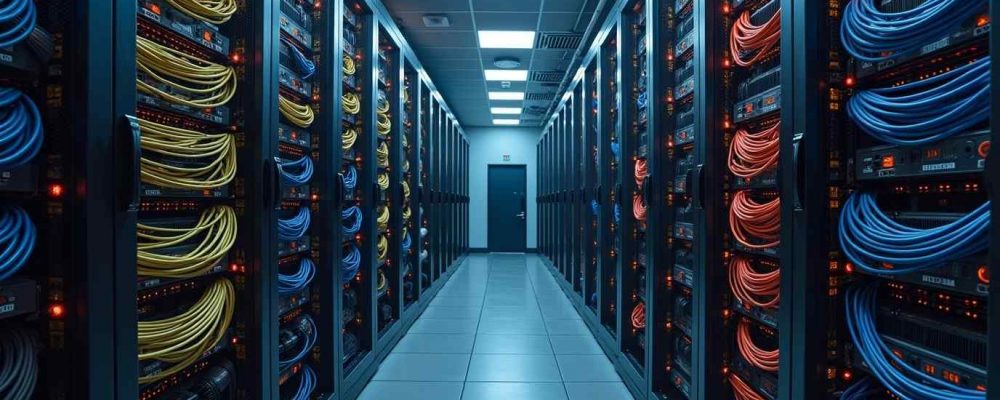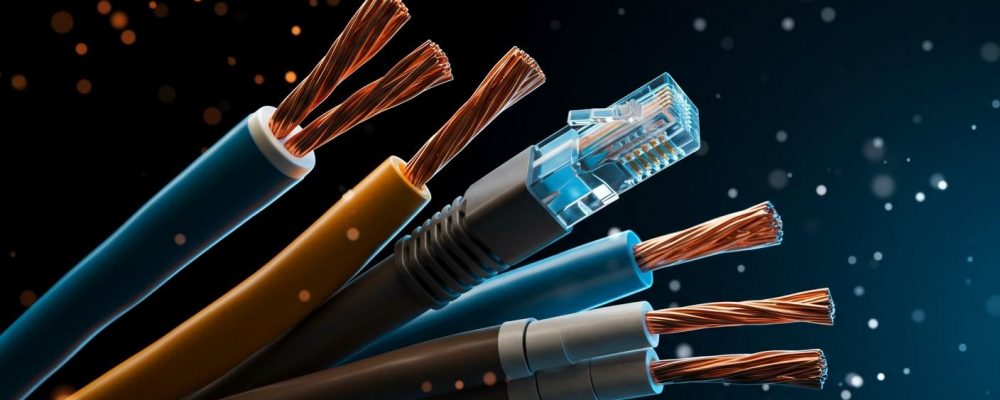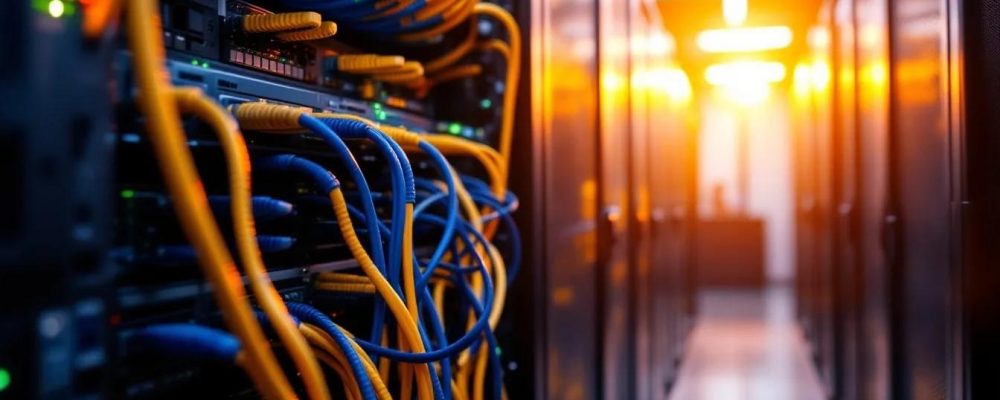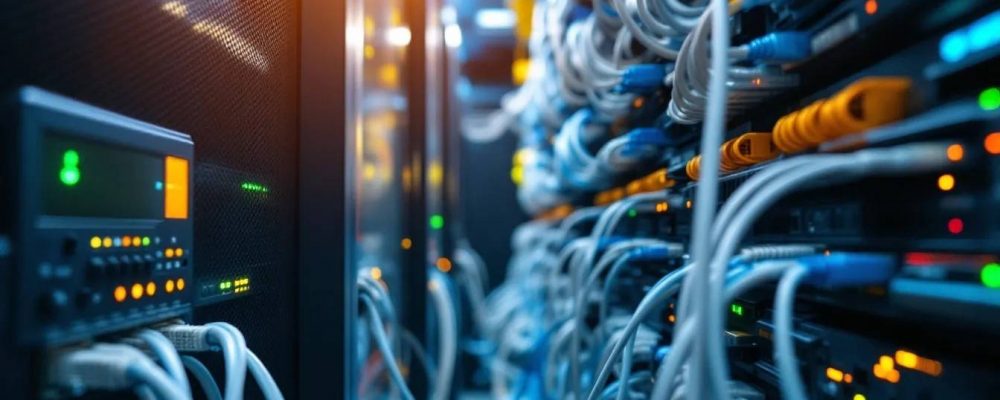Summary : Data center cabling is the backbone of reliable IT infrastructure, directly impacting performance, scalability, and uptime. The main types include fiber optic, copper, structured, and unstructured cabling, each serving specific speed and distance needs. Following best practices—such as proper labeling, airflow management, and future-proof design—ensures efficiency and easier maintenance. Correct installation minimizes downtime, improves data transfer speeds, and supports long-term growth, making smart cabling strategies essential for optimizing modern data center operations.

Data centers are the foundation of contemporary IT infrastructure and offer the vital assistance required for companies to function efficiently in the digital environment. The cabling system is one of the most essential parts of any data center since it guarantees reliable and effective data transfer between servers, networking hardware, and storage systems. Although data center cabling is frequently disregarded, it is essential to its performance, scalability, and operation. The significance of data center cabling, the different kinds of cables that are utilized, important installation factors, and cable management best practices will all be covered in this guide. Knowing the ins and outs of cabling is essential for maximizing operations, whether planning a new data center or trying to upgrade your current cabling system.
The physical network of cables that join different parts of a data center is called data center cabling. These cables carry signals, power, and data between servers, routers, switches, storage devices, and other network equipment. Inadequate cabling can lead to downtime, data bottlenecks, and inefficiencies in a data center’s operation.

Data center cabling uses various cable types, each appropriate for particular needs and applications. Copper cables and fiber optics cables are the two main varieties, and each has a specific function based on the needed speed, distance, and capacity.
Proper data center cabling is essential for several reasons. Properly planned and executed can enhance the data center’s overall performance, scalability, and uptime.
Data transmission efficiency is directly impacted by data center cabling. Poorly installed cables or cables that don’t match the standards of the equipment can cause communication problems, slower speeds, or data loss. Data may go through the network as quickly as possible with efficient cabling, which lowers latency and boosts system performance.
A data center must effectively scale to meet expanding operational demands as data demands rise. Network equipment upgrades and server additions are made simple with proper wiring. Future expansion can be accommodated by a well-designed cabling infrastructure, avoiding future expensive retrofits.
Downtime can be expensive in terms of lost income and damaged reputation. Cables that are not properly maintained are more prone to malfunction, which could lead to network outages. By investing in appropriate data center wiring, businesses may lower the risk of failures and guarantee dependable operation, even under high loads.

Several factors must be considered when designing a data center cabling system to ensure long-term effectiveness and efficiency.
One key issue facing data center cabling is ensuring the system stays applicable as infrastructure and technology change. Scalability, including adding new equipment or network extensions, is essential for future growth. By future-proofing your cabling system, you can prevent expensive redesigns.
Although building data center cabling can be expensive, it’s crucial to consider it an investment in the long-term stability of your system. Although premium cables cost more upfront, they save money over time by lowering maintenance costs and preventing the need for frequent replacements.
Data center cabling industry standards guarantee that the cable system satisfies regulatory standards, performance requirements, and interoperability with other infrastructure. Following standards such as ANSI/TIA-568, for example, guarantees that the system will be dependable and able to handle high-bandwidth applications.
Poor cabling can directly influence data centers’ ability to sustain 99.9% uptime or more significantly. Errors and mishaps that could result in security breaches or operational outages are less likely to occur in a well-organized, secure cabling infrastructure.
Functional areas that require various cable types and installation techniques must be taken into account when cabling a data center. For instance, signal strength and bandwidth are particularly needed when connecting server racks, storage devices, and network switches.
Effective cable management is essential to maintaining a neat, efficient, high-performing data center. Here are some strategies for ensuring a well-organized system:
In addition to being more aesthetically pleasing, a visibly ordered cabling arrangement facilitates troubleshooting. Finding defects takes less time when cables are correctly identified and have a well-organized cable management system.
Cables are routed correctly when clear and detailed installation instructions reduce interference and prevent damage. Adhering to appropriate installation procedures contributes to preserving the cabling system’s integrity and guaranteeing peak performance.
Recording the installation procedure for future use is essential. Comprehensive records and diagrams of cable routes, connectors, and settings can be very helpful when updating or repairing the system.
Verifying and testing every connection after installation is crucial to ensuring everything operates as it should. This stage helps discover problems before they worsen.
It can save time and money later when planning for potential expansions during the installation phase. Make sure your current system can accommodate future additions without needing a total redesign, and think about making space for more wires.

Hiring professionals to install and manage your data center cabling system offers several benefits, including:
Professional installation maximizes data transfer rates, guaranteeing optimal network performance. Premium cables and accurate routing reduce signal loss and increase system performance.
Errors that could result in cable failures or downtime are less likely to occur with professional installation. Planning, installing, and maintaining your cabling system correctly will increase its dependability and decrease its susceptibility to interruptions.
Finding and fixing problems is made simpler with a professionally installed and ordered cabling infrastructure. Technicians can swiftly locate and repair the issue rather than trawling through tangled connections, reducing downtime.
Data centers consume a significant amount of energy, and an efficient cabling system can help reduce energy costs in several ways.
Cables not routed correctly may block airflow, leading to overheating and higher energy usage. Effective cable management may guarantee optimal airflow, which lowers the need for cooling and total energy usage.
Effective cable management makes better use of the data center’s space. Cables arranged neatly free up space for upgrades or other equipment, boosting capacity without requiring physical space expansion.
An organized and efficient cabling system requires less maintenance, which can reduce labor costs and keep the data center running smoothly for extended periods.
Choosing the proper partner is essential for your data center cabling installation and maintenance project to be successful. The following advice will help you make the best decision:
Seek out a partner who has experience managing intricate data center wiring projects. Given their expertise in various industries and technologies, they should be able to handle your particular needs.
Ensure that the partner knows industry standards and holds relevant certifications, such as those from the Telecommunications Industry Association (TIA) or BICSI.
Adequate customer support is vital for maintaining the integrity of your cabling system. Choose a partner who offers comprehensive support services and can quickly respond to any issues.
To summarize, data center cabling is essential to every contemporary data center. Investing in high-quality cabling is crucial for guaranteeing dependable performance, scalability, and efficiency, whether you are constructing a new facility or renovating an old one. A well-designed cabling infrastructure supports future expansion, reduces downtime, and increases data transmission speeds.
Our specialty at Network Drops provides expert data center cabling solutions tailored to your company’s unique requirements. Thanks to our experience and dedication to quality, we can assist you in optimizing your data center operations for optimal performance and dependability.
Contact Network Drops today to learn more about our data center cabling services and how we can assist you with your next project. Our team is ready to provide the best solutions for your data center needs.
When choosing cables for your data center, consider the required bandwidth, transmission distance, and speed. Fiber optic cables are ideal for long-distance, high-speed applications, while copper cables are best suited for shorter distances with lower bandwidth requirements.
It’s recommended that you reassess your cabling system every few years or when making significant equipment upgrades. A periodic review can help ensure that your infrastructure remains efficient and scalable.
Industry standards such as ANSI/TIA-568 and ISO/IEC 11801 define the minimum requirements for cabling performance. These standards ensure that the system supports high-speed data transmission and is compatible with different network technologies.
Poor cable management can lead to inefficient airflow, resulting in higher cooling costs and increased energy consumption. Proper cable routing ensures optimal airflow and energy efficiency.
To future-proof your cabling system, plan for scalability by leaving room for additional cables, using high-quality materials that support the latest standards, and choosing cables with higher bandwidth capacities to accommodate future upgrades.
"*" indicates required fields
Scott Fcasni is the driving force behind Shock I.T. Support’s commercial datacomm cabling division, delivering expert solutions that power reliable, high-performance network infrastructures. With extensive experience in structured cabling and a commitment to precision, Scott ensures that every project—whether for small businesses or large enterprises—meets the highest standards of quality and scalability.